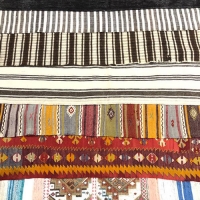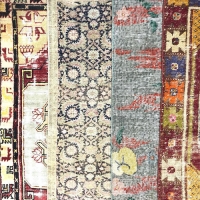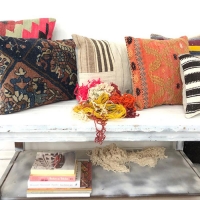
WEAVING OF KİLİMS
When a hand-woven kilim or carpet production techniques are examined, a very different method is actually less. The time required to finish kilims or carpets varies depending on the worker's experience and dexterity. One square meter of carpet is complemented by a master of a weaver on about 60m / workday and with 7-8 kg material. For the production and export of hand-woven kilims and carpets; Original, authentic and first quality products must be submitted for export in the direction of yarn, dye, color and pattern.
It is among the targets of the producers to produce hand woven kilims and carpet production with the same costs or with lower labor costs. In order to achieve this goal, it is necessary to facilitate the use of the workbench and to shorten the weaving time. In order to shorten the production process, it is important to redesign the machines with an innovative perspective. In this context, it is always necessary to carry out an improvement and replacement work on the looms which are an indispensable part of the hand-woven carpet and kilim production technique. The negative effects of the tools used in hand-woven kilims and carpets on the woven cloth can occur from time to time. In addition to the economic benefits of the tefe and carding mechanism, the fact that the mechanism will be applied on the ergonomic bench will have a healthy effect on the textiles. Hand weaving carpets used in handmade carpets, knives, scissors, comb tools, such as the use of ergonomics and health problems arising from the use of these tools are available. Therefore, it is necessary to pay attention to these issues in kilims and carpets.
The weaving loom can be expressed as a device made of wood or metal material with warp threads on which the kilims and carpets are made. You need to have some tools to perform any weaving process. At the beginning of these tools are kilims and carpet weaving looms. Various looms are used in carpet and carpet weaving. The looms, which are an important factor in the production of hand-woven kilims and carpets, need to be improved by an innovative approach. First of all, it is aimed to determine the working principles of existing workbenches in order to serialize the use of weaving looms in the future and to reduce production costs and to reduce production times. For this purpose, it is necessary to demonstrate the innovative approach required for hand-woven kilims and carpets.



